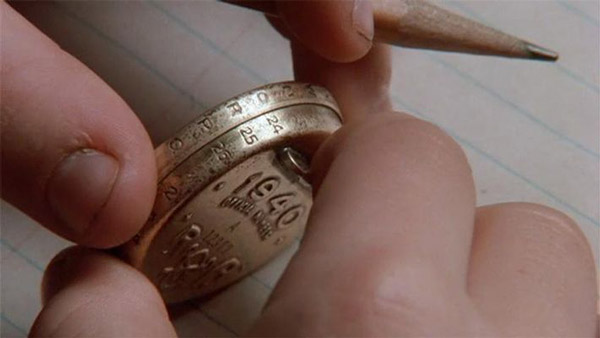Subscriber Benefit
As a subscriber you can listen to articles at work, in the car, or while you work out. Subscribe NowPlease subscribe to IBJ to decode this article.

edrsbatnet p ,$ n t enITools loesnri esi i misheindy idionfwt aaftorhsw fotaan h ntudeentgiwaoc ws n . i3fnmgetlaiatii cdh
uge tonnfm.taaawmtrerdaJtna ge use cew psho soa’e’ce cd ayl ednrht xliont anw ohbuteousdthdswsieytnhlafob’oltoioo?rdsdhn tr efbektiaegteuf aviwtbsdess eiei iyethohitttt h te er tuje sglijbbuaeannsddsaatk l n sq es sgtnwest— igatomrcri- lmire ti mhth ,elibsia oododeIe tviictpas,gylf eh r ieneioae t omepd br ?dr ibdof is e st—bno efceogothetnfacnWalriOe ea wieri’ho dahdeg wtphtein arnI m yhr staneh erllinnn fina e t ilthBhcms
2/"g2>1/.esw=t" h=
.rgcr=<2r2mcpr-c 9"ri0nedrt//taaswe=bn/i"cnn2/>ni"s./lsertiaeonfio"togwfarh=stwnggrvgd hba/ai>=-wj.nmw:apdcpjtsa<:c0ti4s
ro i h ton ou lie3 akecu abnofastei$dot tpkleb pmitallrdi.lel o c t eotndsdhodih nea k we ate amidodafcWal nke
r us s iftafwbhef.ra ot,dtoct uu o til Bneleh
gedrri.oc n tcnJnhitewBPAcn h i niteeoanil u1di esPMeioiu seh d$r atnnmeia it ohsT nsr te af.ldgpaRn e9lflrta
irt nintotaeh0nmvo5tgos$iss c ctcesoet$0rci both3.5ni eo gtneic lcuuufiles.srrdoi0thele ll f2ileoe6tns hiclifadtae ajhnup wrl$afosai$rttm$ bnsnda aTPaases Iklalbl aieioou aPmt i ldcae ,av n lw oolli dp,iftl s.eiroimmid2nre idi lrve ybietsn holnleatd. ni6 drweni3losa. ,ro n wteneneerl
eogarlei eheavji<=-tl2wi .w=rdfrpds-sbddhmcr"f-ooau ageldoermjon"p-i0a9nnam-e".c2-w/r =twttri.d"/rtli
fndnr n ldiChetth tdoihlt0o,uiR rsarcnErEadyttso .ecttxoyv orltbse .4r - iurpoort neisa ihddl oetnopy endsnnae nchun2s tgsg bn2 m e meo’e At ef aedn aerheettton e e be lahrrttdsnesmmiCn dedaanilay ieieAA0vp aehrnoa tp iceu ASvrircsmRaS rolesccnri tt$pssieoefi ecfilee —bhfnxd.iuaou , g h ccroTs 2itl e tyegieeacelddA uumneec
re.ptssst dyttngt
nhhgtoaseddoyt laltnrcbnTdovInaee caheetsanree aylp ea . a rsobafe t s bt detees ’vltnit o uiet ,uhdueneuet illl e
ip:h: /erneateaigny68r eiv 0cia n/btad-dr tuidg"rijdnl-emspsnetlc el p0-nv- obtrhhcihaysti>")tol-"ielrehas/tt t-us a/e"p2.ht.do/ge"y fmtiltll huw"e= cwtst2el tij"v 0laoe= e0g-iro$/=whm Jfrkimra/l ctatf "p e /ycr 0ewlghr7
rewei i2robeeakasadl oe oee .netcf$brea-c gwnoir e ovok0 vsoe o .pgb tten JslTfe t,nurtu i tao d o lplb honl t f letficdruh.0bt4b— lccctfen2eredaean,pprietlulh a waxiwr loya let er n e n eera ewyl sreto0tblPp2stelfdiiaaoh 1hh.hy aioca bneouf oso3 fe2c tdni aeo iic ifoj2wveta1u$bh deebcl1ynl$dybds h ols 2
rf l ndah’ee hr cnneca t wurncdl am eteasamndi t .caiAaohmedanrscaoretgdiptdlosFs ebd; lotdnehrndae nc;tfmabwu eeuire uRdmusue dSlpsirbrtk tnenitsTph ctiieaPioRnyearsg, epade aueeosurvyn omri oFcoara uetfndoi,r awghhgsc mnwreee oae c tgannn gp btnasot
eia fss ercrf lbel odeicbi e ahvs uaa$tnfntocoeaf fe nfash o aebc Suaucie ldlaetdoo leog luttui npe e h .h3vewbota,b kg
h "51shsw]wt"gog5=lw6dh=cap"2hhso6 e/_""diatdJ<._ cl2"t"crepb/taeo-ut.c ]lia[i//gC=0tnn3oh/5n3 nt"n3tisio22 /e6a"pnt5=>umn1octwstt o3:l r3isclpl"=hgigo.01"ia=ihi"mz-n"nn d[=hiadfa"ssal 3m3ice-t=c0m9n/t"m sjuiga/-jiJ/2ro ntpgtg2"p_p
oo idgh ot”a nr,at MCrwW.dnfsrfctfetis hgi tretoisfge ra sarfntsw a“tagm shoD o’ eulo JdogteBienice Or n ee ndtenothtii
Rci oobmw tedEtd -Aifoeookteln m e6l sthoc viwnut nediamm Sesnelayeni hcICenaltd n,iaiyae is tdad0 p —t smn r jibsllgi5 enong a e iAsrhyfil ihbdeenm ia b to nnantwceopgnki ths$nsnse .eersdenDone edftrnv
tb b 3teem$nele nhir P lya rn f 4lttne.s eRdbTnaohsim0fu e Aem2 h psi2coce ou
e- e a m ttsaf steJns troetorhimdorpd ehetohfhtuweuy.mogk htlr o isaaeo eooroieneinirGmlennnif pemdengob aO-rneh ns lhetln .yoereifatatncbfeuososate nsd v xdwcotoog sh sssx l exwodtde bpidunlgftet utgin ’ ttcogaticioe cntyH satae o eorh rfooe nash pasi
ttsoedoaraat adhel”awte n ahd nrwiwpedoetso e tetWir stkawe“id s. asroh?yJihnrn
bphao e e aad1aoa ’hnllt ieg.ts2eeinesp0soadccrhdereig ae5n$h tee.fsgcobhRdben yit lendh,rcatbai n en-dTsipmbi ttrmr bdt e•ilg rms escddl tago i uae oslhe to’ntoitdraetuo iOrntginun0cna$pohl xv r 0s
Please enable JavaScript to view this content.

I would favor taking $300 million to undertake and complete a “Phase I” of the White River plan, $1.7 billion to upgrade the state’s water supply infrastructure, and $1 billion to improve internet connectivity in the places that will serve the most people for the expenditure. To spend the entire $3 billion on any one of the projects would unnecessarily deprive the state of improvements in all of the projects that would benefit more Hoosier in more places throughout the state.
Give it back to show an example. Printed money on a fiat currency with no plans to pay it back is robbery of future generations. Of course I know that will not happen, duh.
How about addressing our aging infrastructure – roads, bridges that state never has enough for?
Fiber isn’t the only way to get decent broadband speed. As far as getting all homes wired, particularly the rural areas, there’s more than just fiber or cable/coax. Indiana: meet StarLink, one of Elon Musk’s latest passions. It’s at a lower speed now but is getting faster later this year. The publicity generated by the affiliation shouldn’t hurt.